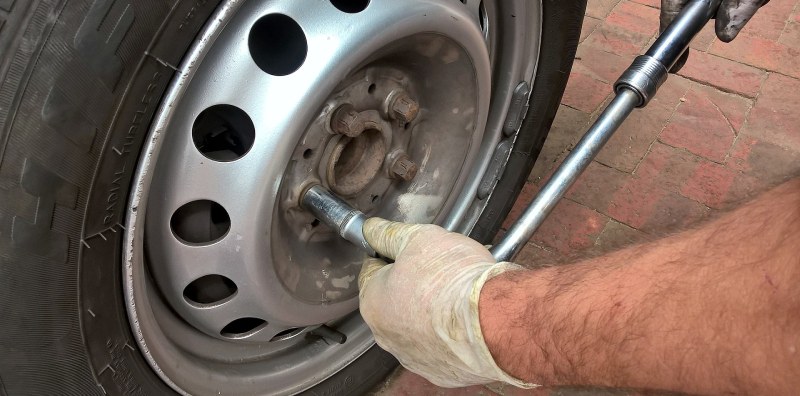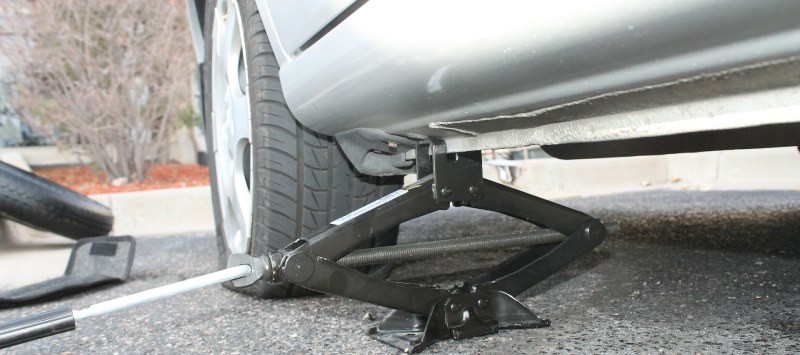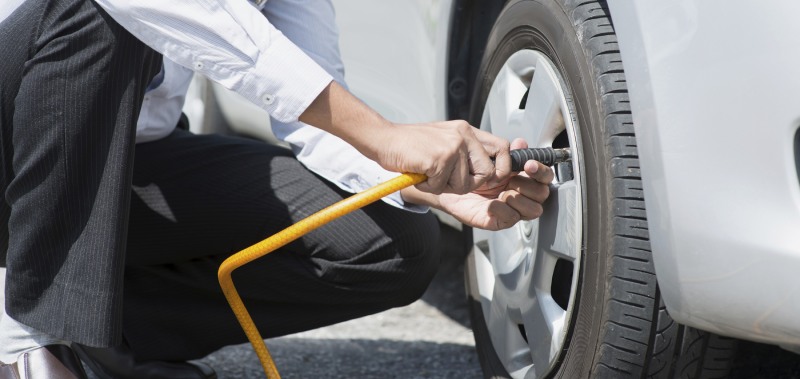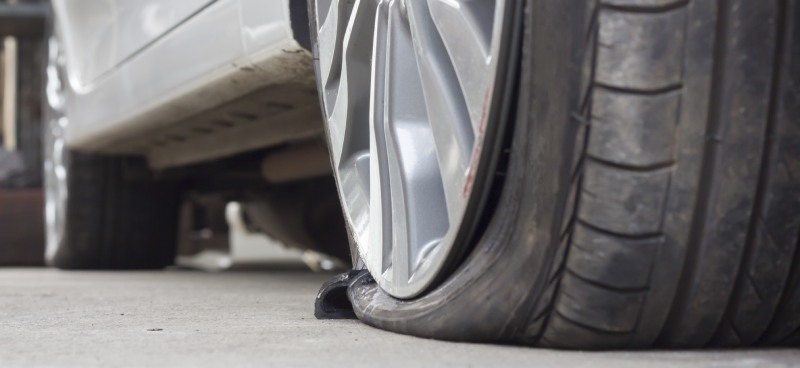Get To Know Your Car
- Get to know your car and make sure that the spare wheel is present and in good condition.
- Know how to use the driver tools when needed.
- There are cars without a spare wheel at all, in which case you need to know where the inflation kit is and how to use it.
- It is important to make sure to fill the spare wheel with air when filling the car’s tires.
- In case there is a small spare wheel with a speed limit of 80 km, the inflation pressure is usually 60 PSI.
- Most new vehicles have a wheel pressure monitoring system (TPMS) installed that warns of improper wheel pressure.
The Tools To Replace A Tire
- Inflated and proper spare wheel.
- Jack.
- Wheel wrench.
- Jack handle.
- Warning triangle.
- Luminous vest.
- Gloves (desirable but not required).

Safe Start
- The side of the road is a dangerous place, so it is important to follow the safety rules.
- We will place our car as safely as possible even if it requires to drive with the flat tire to a secure place.
- It is advisable to stop at a safe place such as: gas station, rest area or anywhere that can prevent proximity to flowing traffic.
- If stopping at the curb, keep as far away from the road as possible.
- When stopping on a narrow and dangerous sidewalk on a long-distance road, call the police/kvish 6 before starting to work on the tire.
- We will make sure that the engine is off, and the safety brake is on.
- Stop on a straight road to see and be seen (at a curve it is much harder to spot us).
- We will turn on distress lights and wear a glow vest before getting out of the vehicle.
- Place the warning triangle where it will be detected about 100 meters from the vehicle.
Releasing The Tire
- We will take out the spare tire (it is advisable to lay it on the floor as it may roll)
- We will make sure the tire is inflated (we do not want to change a wheel and then find that it is empty of air)
- We will remove the decorative plate if any and/or remove lids from the screws if installed.
- We will start to loosen the screws of the faulty wheel, turn counterclockwise and again loosen only slightly, do not remove.
- If there is not enough force in the hands, thread the wrench on the screw, climb on it and press with the help of the bodyweight.
Jack Position And Vehicle Lift
- Open the jack almost to the required height and place the jack in the designated place (you can see the location in the vehicle book).
- Rotate the jack handle toward the jack toward the lift.
- Important – the jack must stand on a stable and hard place (and not on soft sand, etc …)
- It is desirable at this stage to place the spare tire under the vehicle so that if the lift slides, the vehicle will stop on the wheel and not on the road/hand/foot.
- The vehicle must be lifted until the wheel is fully in the air and a safety clearance of 15 cm is taken to allow the inflated wheel to enter.

Replacing A Flat Tire
- The screws should be removed and set aside.
- Remove the punctured tire and install the correct one (we will put the punctured tire under the vehicle in the meantime, again for safety).
- Tighten the screws as much as possible with the hand.
- Tighten the screws clockwise.
Lowering the Vehicle and Tightening the Screws
- We will take the punctured tire out from under the car and lower the car with the help of the jack.
- Forcibly tighten the screws with the tire wrench, again for final tightening the leg and bodyweight can be used.
- Collect the tools, the faulty tire and the warning triangle.
- Drive to fix the flat tire.
Tire Sealer
It is possible to use an anti-puncture spray that spreads sticky foam into the tire.
The purpose of which is to seal the puncture until it is repaired by a professional.
The anti-puncture bottle is for single use. It should be used in the event of a puncture in one of the tires, if one of tires have no air or if air is slowly escaping.
The use is fast, clean and does not require much effort.
Important – In vehicles with a hard inflation valve, do not use the tire sealer as it causes damage to the air pressure sensor.
Tip – It is highly recommended to have a small compressor in the car.
It is a cheap and efficient product that can save us a lot of hassle of replacing a tire or inflating the spare tire when needed.
How To Use Tire Sealer
- Identify the punctured tire and it is advisable to bring the tire to a position where the valve is at 06:00.
- Make sure you are in a safe place and away from flowing traffic, wear a glow vest and turn on distress lights before getting out of the vehicle.
- Shake the can well, open the lid and attach the end of the tube to the valve, making sure the tube is properly screwed before use.
- After threading the hose to the valve, empty the entire can for the punctured tire.
- After emptying the can, the tube must be released from the valve.
- Travel with the vehicle for about 3-5 km in order to disperse the sticky material inside the tire effectively.
- Air pressure should be supplemented as needed until the arrival at the garage.

Summary and Recommendations
The tire is the only connection of the vehicle with the road. Improper air pressure, a worn or dried out tire makes this connection loose and dangerous.
Be sure to check the inflation pressure as advised in the manufacturer’s instructions.
Drive carefully,
Safety comes first.
Take care of yourself and your family!
Traffic Safety Official
LUPU – Car Fleet Management




